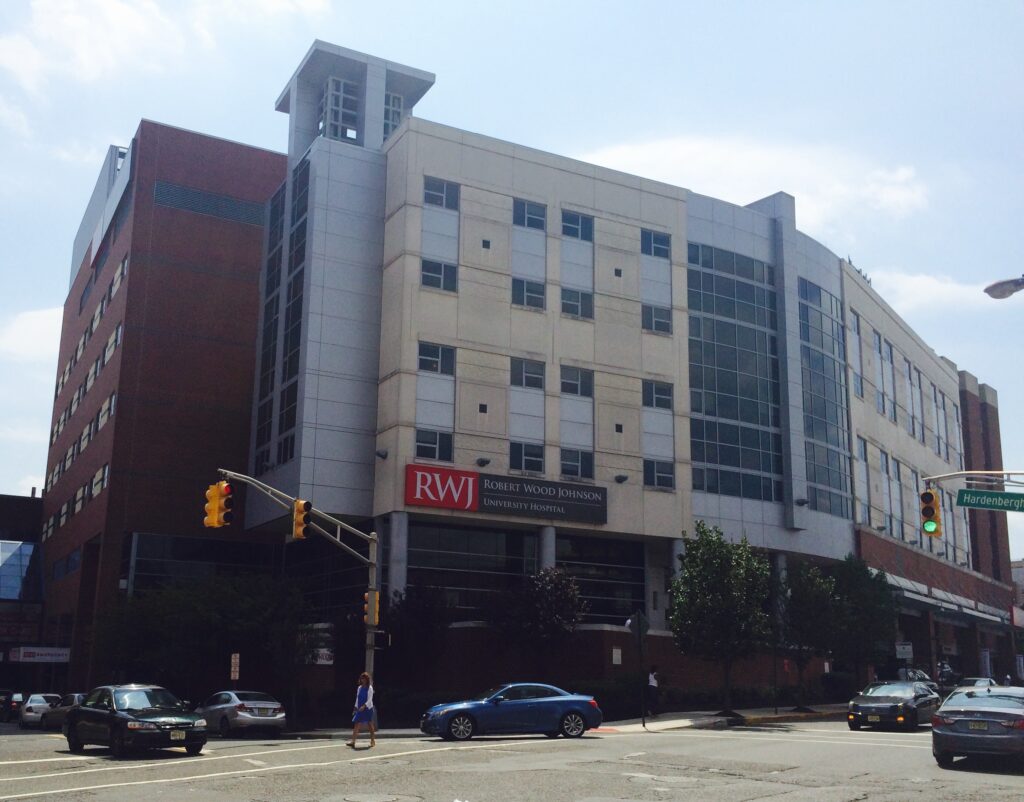RWJUH Nurses Poised to Strike over Safer Staffing

For the first time since 2006, 1,650 nurses at New Brunswick’s Robert Wood Johnson University Hospital are set to go on strike Friday morning over inadequate staffing levels and a spike in their healthcare premiums.
In 2006, the nurses were out for about a month.
“This is for the future of the nursing profession—you are not going to see nurses stay at the bedside for 30 years unless you make it attractive with safe patient staff ratios,” said Judy Danella, president of United Steel Workers Local 4-200. “We are one of only three Level One Trauma Centers in the state. We take some of the sickest patients in the state from several counties and we need to make sure when we have a really critically ill patient there’s that proper one to one ratio which we don’t always have.”
The New Brunswick facility is one of a dozen acute care hospitals in the RWJBarnabus system that has a partnership with Rutgers University which makes it the state’s largest academic healthcare system. It has 38,000 employees and $6.6 billion in revenue.
The system’s recently retired CEO and Present Barry Ostrowsky earned $16 million in the second year of the pandemic, making him the highest paid hospital executive in the New York area, according to Crain’s New York.
BACK ON EARTH
Nurses’ hourly rates range currently from $44 to $65 an hour and the union said that management offered a four percent increase but over the next few years wanted to raise healthcare premiums by seven percent, which, along with inflation, would significantly shrink the real value of their raise.
In a phone interview, Danella explained that after three years of COVID, she and her colleagues were feeling quite directly the exit of bedside nurses who left the profession due to the pandemic, a trend that’s been well documented around the country.
“A lot of people left nursing at that point—they were afraid of COVID, and we did lose the young people who didn’t want to work through that and the older nurses who had the comorbidities that were an issue with COVID,” Danella said. “But we still went every day and did whatever we had to do to take care of our patients.”
Working during COVID as a healthcare worker meant you had to always be mindful of the risk to your entire household.
According to an investigation by the Guardian Newspapers and Kaiser Health News, well over 700 healthcare workers died in the first wave of the COVID pandemic from New Jersey and New York which came amidst a national shortage of N-95 masks. Nationally, over 3,600 healthcare workers perished in the first year of the pandemic. Close to two-thirds of them were people of color.
Last year the Brooking Institute released an analysis that estimated four million Americans had been sidelined by long COVID, a serious occupational risk for healthcare workers that’s gotten short shrift as policy makers pressed to return life to normal.
Back in the spring, HPAE, the state’s largest nurses’ union, held a major rally to launch a statewide campaign to get Trenton to enact nurse-to-patient staffing ratios as was done in California in 2004 which studies documented greatly improved patient outcomes, workplace safety, infection control and nurse retention.
TIGHT ALL OVER
The renewed push for the staffing requirements comes as a national survey predicted New Jersey would be shy 11,400 nurses by 2030, ranking it in the top ten state with a severe shortfall. Also, in that crisis mix Connecticut (27,926), New York (18,784), and Pennsylvania (16,430).
According to the American Association of Colleges of Nursing “a shortage of registered nurses is projected to spread across the country through 2030” with “a significant RN shortage in 30 states.” The journal cited an April 2022 study that “found that total supply of RNs decreased by more than 100,000 from 2020 to 2021 – the largest drop than ever observed over the past four decades. A significant number of nurses leaving the workforce were under the age of 35, and most were employed in hospitals.”
“HPAE nurses are joining our nursing colleagues at USW4-200 on the picket line outside of Robert Wood Johnson University Hospital,” said HPAE President Debbie White, in a statement. “Nurses are standing together to urge healthcare executives and New Jersey legislators to protect our patients by setting safe staffing standards. Until we all—administrators, legislators, and communities—acknowledge the dire state of our healthcare system, we will never solve the problems that exist.”
White continued. “This current staffing crisis continues unabated because there is a revolving door in our hospitals. Nurses come and go because the work environment is unsafe and because they know it puts their patients at risk. It’s time for all hospitals to take the action necessary to solve the problem: set safe staffing standards.”
According to HPAE, a third of New Jersey’s nurses working directly with patients in the hospital setting have left the profession in the last three years. In that same survey of its members, the union found that close to three quarters of hospital nurses polled had considered leaving in recent years with newer hires more likely to exit. Short staffing, burnout and job-related stress were the most common complaints.
The hospital’s media office did not return a call for comment but in a statement to Becker’s Hospital Review a hospital spokesperson said the “RWJUH nurses are currently the highest paid in New Jersey” and that the union had “refused” to enter into a binding arbitration, rejecting a “generous settlement at a time when hospitals nationwide are struggling to recruit and retain nurses.”
Danella said that back in 2020 the union went into arbitration for their contract and came out the loser “so, we didn’t want to try that again.” Currently, she says the hospital has “a lot of nursing vacancies” and spent $56 million in a year and a half on 110 traveling nurses.
There is a federal mediator involved and the Murphy administration told InsiderNJ it is trying to play a constructive role in the labor dispute.
“The Administration has been engaged at the highest levels with both Robert Wood Johnson University Hospital management and union leaders to help resolve outstanding issues,” wrote Christi Peace, deputy press secretary for Gov. Murphy. “The Administration will remain engaged to help resolve the potential work stoppage.”
The hospital has told local media that it’s “activated an extensive contingency plan” that involves “hiring a highly-qualified replacement nursing workforce for an extended period of time, which could exceed 60 days.” Part of that contingency plan will reportedly include enlisting the help of medical students.
NURSES OF THE WORLD UNITE!
The potential work stoppage comes as the nation is seeing a significant uptick in strikes as well as organizing drives. Earlier this year, the Economic Policy Institute reported that major strike activity in the country was up by 50 percent last year.
Last year, St. Michael’s Medical Center in Newark prevailed in their month-long strike against the private for-profit hospital. Throughout their ordeal, which played out on the backend of the pandemic, the nurses drew widespread local support as the 350-member union tried to turn ‘hand clapping and pot banging’ appreciation into something they could take to the bank.
“We got a lot of community support but Mayor [Baraka] never came out but his mother [Amina Baraka] did and so did Senator Cory Booker,” Elfrieda Johnson, president of JNESO AFL-CIO District 1, told InsiderNJ.
This summer we have the actors with SAG-AFTRA AND the Writers Guild out on strike. Locally, the New York Nurses Association went on strike at some private non-profit hospitals.
According to data from the National Labor Relations Board there’s been a significant increase in the number of filings from workers looking to start a union. Bloomberg Law reported the service sector saw a major spike in union election wins, scoring close to 1,000 in 2022, up from just 575 the year before.
In what’s being hailed as a landmark contract, the New York State Nursing Association just won a $16,000 raise for their members that work for New York City’s municipal hospital system Health + Hospitals Corporation.
“The 5½-year deal, awarded by an arbitrator several hours before the two sides’ self-imposed deadline of Aug. 1, will give the 8,000 nurses in NYC Health+Hospitals’ 11 hospitals and mayoral agencies a $16,006 raise in its first year and $5,551 more in the second,” according to Work-Bites, a labor news website. “After further increases of 3 percent, 3 percent, and 3.25 percent in the last three years, the nurses would end up making at least $32,000 a year more, according to NYSNA—the largest salary increase ever for city public-sector nurses.”










Leave a Reply